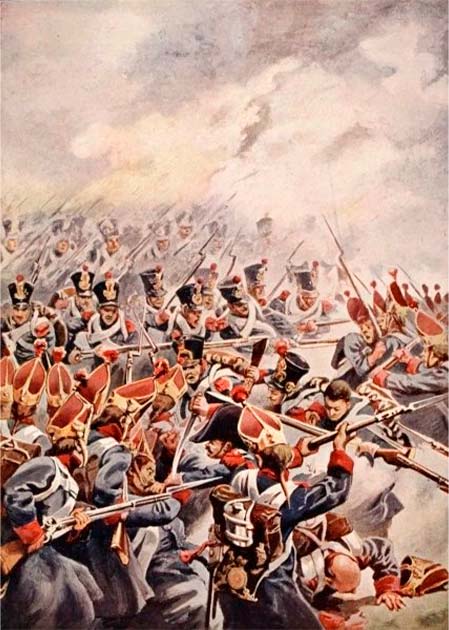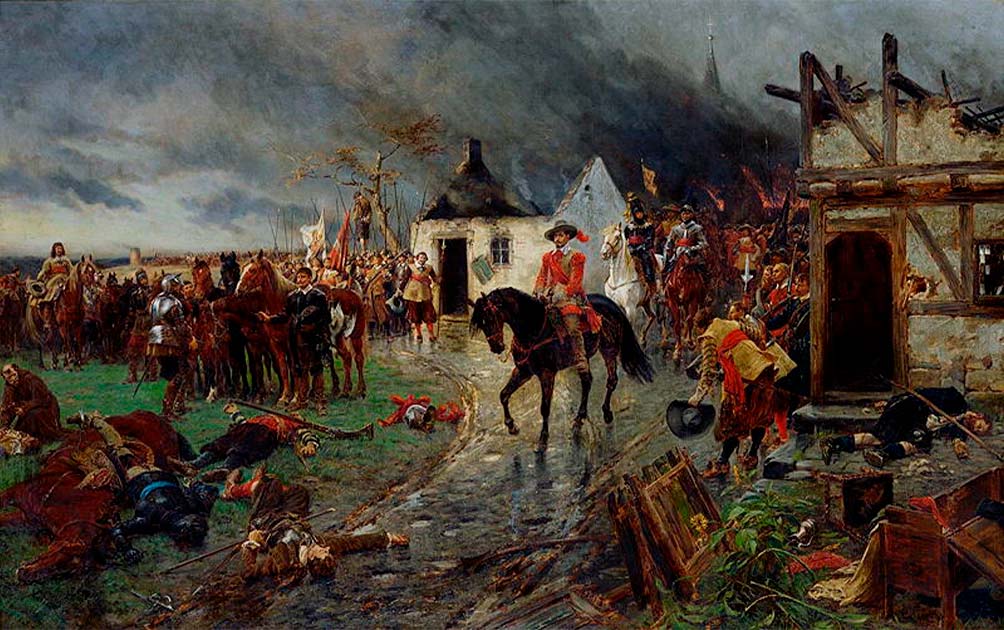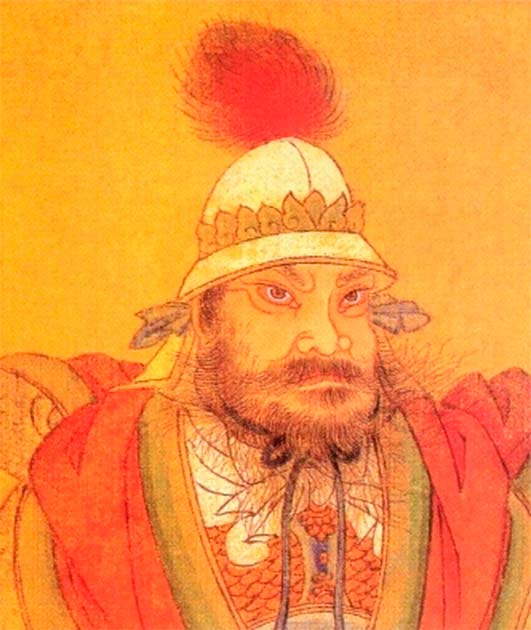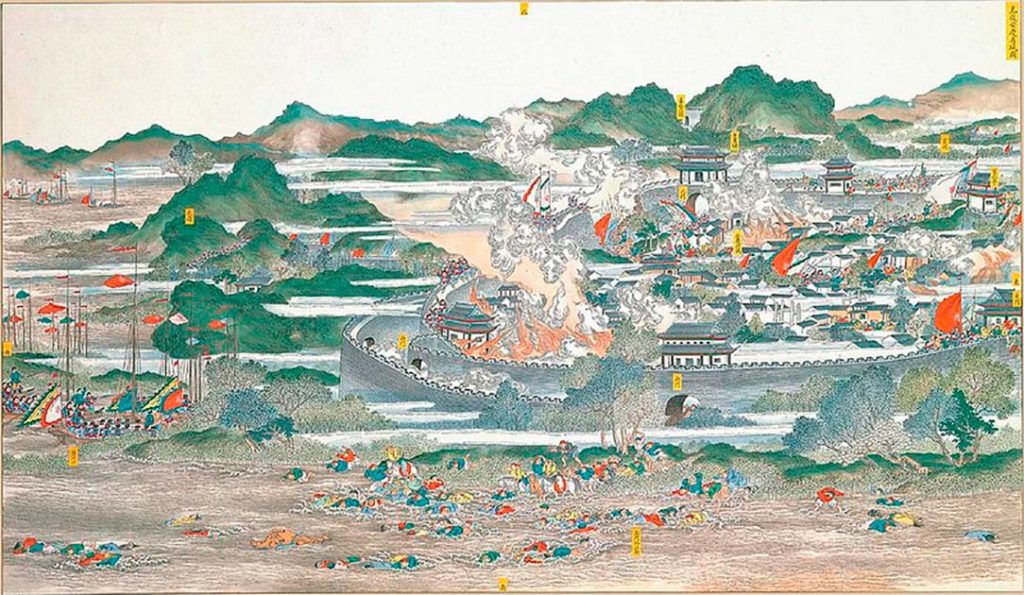The 20th century has, without a doubt, seen humanity at its most destructive. More people have died at the hand of man in the last century than the world has ever seen before.
This is a triumph, if it can be called that, of technology over humanity. Our ability to kill on a massive scale, and to emotionally distance ourselves from that killing, has never been more powerful.
One could argue that the ability for destruction that science has given us has ushered in a new era of humanity, one characterized by the loss of interpersonal relationships. As we become more distant from one another, our decisions become more selfish, and communities are replaced by individuals, all in competition.
However it would seem that there has always been a cruel streak in humanity. Our tribalism and competition for scarce resources has led to a history of violence, punctuated by enormous loss of life through our callousness, or carelessness.
Many of such events occurred before the technological terror of the 20th century. Here are 10 examples through history where the death of millions altered the course of our history.
10. French Wars of Religion
Between 1562 and 1598 France was plunged into a religious war. The French Catholics fought the Protestant French Huguenots, severely damaging the French monarchy, French society, and the French people in the process.
Sparked by the death of Henry II in 1559 and the power struggle following his death, for the next 35 years France was in near constant conflict as the nation convulsed as the two sides clashed. The line of Valois kings was ended, and France herself was wrecked by the conflict.
It is estimated that as many as 4,000,000 people died during the conflict. In addition to the violence many died from famine or disease as the French state collapsed. Only with the accession of the Bourbon king Henry IV was order restored.
9. Napoleonic Wars
The Napoleonic Wars are seen in a somewhat romantic light these days, no doubt something to do with Jane Austen and all those tight trousers. However the reality of the conflict was very different, as over a twelve year period Napoleon laid waster to Europe, changing her future forever.
The genesis of this conflict came from the French Revolution but it was unmistakeably driven by one man. Only Napoleon had the tactical and strategic genius to take the French armies from Spain to Moscow, and only Napoleon had the callous disregard for human life (and overbearing ego) to put such a plan into action.

In this decade long conflict as many as 7,000,000 people died. Some 300,000 of Napoleon’s own troops died in direct fighting, along with as many as 2,500,000 other troops. But alongside the combat some 3,500,000 civilians died as Europe was torn apart by one man’s war.
8. Mughal Maratha Wars
This conflict on the Indian subcontinent is known by many names. Some call it the Deccan War, others the Maratha War of Independence. Two mighty Indian empires clashed over four decades between 1680 and 1707 with the control of India at stake.
The wars came out of an attempt by the Mughals to annex the Marathi state. Maratha’s golden age was over but she was still a powerful force and resisted the newcomers in bloody conflict.
Ultimately, Maratha was able to retain her independence and resist the Mughal advance. However multiple sources allow us to be confident as to the death toll: 5,600,000 people died as war raged across the subcontinent, the most bloody conflict in Indian history.
7. Thirty Years’ War
Another religious war between Catholics and Protestants, the Thirty Years’ War lasted from 1618 to 1648. Primarily a conflict involving the Holy Roman Empire and fought in central Europe, it is the most destructive period of fighting in pre-20th century European history.

Sparked by the deposing of the king of Bohemia and his replacement with a Protestant usurper, the local revolt soon drew in many of the major European powers due to their interconnectedness and specific interests in the region. The conflict would eventually evolve into outright war, with France and Sweden fighting the Empire and Spain.
As many as 8,000,000 people may have died during the conflict, with the majority again lost to famine and disease caused by the crumbling states. Some areas in what is now Germany, in the center of the fighting, lost as many as half or their total populations.
6. Dungan Revolt
The Dungan Revolt, a Chinese civil war which ran for 15 years from 1862, was strictly two separate uprisings, both by Chinese Muslims and both against the Tongzhi Emperor of the Qing Dynasty. The revolt was characterized by genocidal massacres, first by the rebels against the Han Chinese and then by the Han in revenge.
Although most estimates believe that around 10,000,000 people were killed during the fighting, some estimates put the figure as high as 21,000,000. A combination of the massacre of civilians, diseases including the outbreak of plagues transferred on the corpses of the dead, and famine once again led to the majority of the deaths.
Entire provinces of China were stripped of their population, killed during the revolt. Gansu and Northern Xinjiang are estimated to have lost three quarters of its people, and of the 4,000,000 Hui in Shaanxi, only 20,000 remained after the fighting stopped.
5. An Lushan Rebellion
Another Chinese civil war, this one occurred more than a thousand years earlier. The An Lushan rebellion ran for eight years from 755 to 763 AD and was an attempt to overthrown the ruling Tang Dynasty and replace it with the Yan Dynasty. Only the fall of the latter would see the conflict end.
As with all such conflicts, the uprising led to a profound shift in Chinese history, and as with all such conflicts, this was primarily due to the death toll. Again the warfare led to widespread famine and disease which wiped out much of the population of the affected regions.

It is believed that 13,000,000 people died in the An Lushan rebellion, as the Yan tried unsuccessfully to take power. The large scale loss of population and the destruction of the Chinese infrastructure left the ruling Tang Dynasty also weakened, and parts of western China were lost to them forever.
4. The Rise of the Qing Dynasty
More infighting in China. The transition from the Ming Dynasty to the Qing, which led to conflict for much of the 17th century and only saw the Qing emerge as victors in 1683, came about because of a combination of grievances against the incumbent Ming and opportunism in the light of their weakened position.
- Genghis Khan Facts – 5 Interesting Details That May Surprise You
- Who was Atilla the Hun? The Man Behind the Myth
Some blame the climate event known generally as the Little Ice Age for the weakness of the Ming, and certainly this had led to droughts and famine before the conflict even started. However in the decades of fighting by the Ming, the Qing and other minor dynasties, the situation was made far more severe.
Perhaps as many as 25,000,000 people would die in the conflict. Although the Qing became the dominant power relatively quickly, the Ming held out in the South for decades, prolonging the fighting. In the absence of a quick resolution, the infrastructure completed collapsed and many regions simply starved to death.
3. European Conquest of the Americas
Columbus’s arrival in the Americas in 1492 sparked one of the most destructive periods in human history. Although the limited documentation regarding Native American populations limits our knowledge today of how many died, there is a broad consensus as to the catastrophe that unfolded.
European settlers arrived with aggressive intent and the natives were severely outmatched. Worse, they carried disease with them against which the Americans had no resistance. Entire populations were lost to these new plagues, and entire cultures lost.
It is thought that 90% of the local populations of the Americas were lost following the arrival of the Europeans. This could put the death toll as high as 80,000,000 people, a global catastrophe.
2. Taiping Rebellion
We are still not done with China, however. The Taiping rebellion between 1850 and 1864 is the greatest of the Chinese civil wars, again two competing dynasties fought and again the Chinese state suffered and the death toll was catastrophic.
The Taiping Heavenly Kingdom, a absolutist religious state, led the rebellion against the incumbent Manchus of the Qing Dynasty. Declaring themselves an independent state, the Heavenly Kingdom sought to overthrow the Qing and introduce hard-line religious rule.

Perhaps as many as 40,000,000 people died in the conflict, a number comparable to World War One. The Taiping Rebellion was one of the most destructive wars in human history, and the worst conflict of the 19th century.
1. Mongol Conquest of Eurasia
The worst and most destructive conflict in human history however was of course down to the Mongols. The power and pre-eminence of Mongol warriors and their systematic destruction of the lands they conquered, village by village, was absolute.
Some estimates suggest that as much as 11% of the entire human population at the time was wiped out by the Mongol invasions. Those who resisted the Khans were wiped out entirely, to leave no threat behind and to encourage capitulation in others.
90% of the population of Persia is believed to have been killed, and the death toll and displacement of the Chinese population saw their numbers drop by 60,000,000, although this figure may be exaggerated. What is certain is that the Mongols changed the course of human history, and nothing like it has been seen before or since.
Top Image: Mongol warriors, who under the Khans were responsible for one of the highest death tolls and worst conflicts in history. Source: Staatsbibliothek Berlin / Public Domain.
By Joseph Green